Getting Turned On in Las Vegas, Nevada: At The Neon Boneyard
When The Mob ran Las Vegas, bodies would get buried in the desert. Mobsters. Crooked casino dealers. Gamblers who didn't pay their debts. And there's something else laid to rest here in the arid waste of the Mojave, but they're not dead yet. Classic casino signs. And they're getting turned on in Las Vegas, Nevada, at the Neon Boneyard.
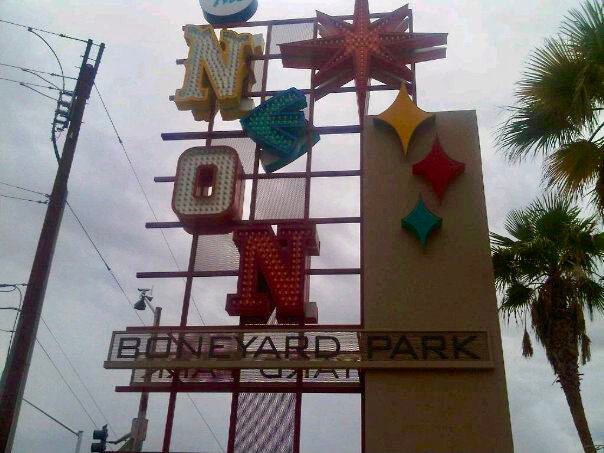
Up in North Las Vegas, just above Freemont Street, lies the Neon Boneyard. Established in 1996, this Non-Profit collects, preserves, and showcases the iconic neon signs of Las Vegas' classic casinos. Daily tours offer visitors a chance to wander through the graveyard and view the remains of Vegas' vintage past.
Iconic casino names abound here. Riviera, Moulin Rouge, Golden Nugget, and Stardust. Plucked from the tops of soon-to-be imploded casinos, dragged out of storage, to scrounged from junkyards, the list of old casino signs grows with every year.
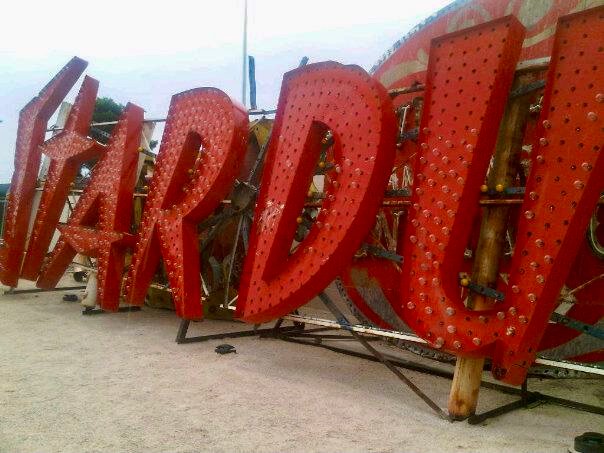
The Stardust Casino opened in 1958 and was the largest hotel in the world at that time. Over the years, casino ownership changed hands often, frequently into the hands of the Mob. Moe Dalitz and Frank Rosenthal, two notorious Vegas gangsters, both enjoyed turns owning part or operating the casino.
The Stardust's Futura font is emblematic of The Strip's 1950s & 1960's Go-Go style. Its eight bright crimson letters, encrusted with white lights, twinkled over the burgeoning strip for decades.
Although I have driven by the Stardust, I could never go inside as it had closed by my first visit to Las Vegas. I would have loved to walk across the gaming floor and taste a bit of the checkered history that occurred here.
The Stardust Hotel & Casino was demolished by implosion on March 13, 2007. The brand new Resorts World Hotel & Casino now stands on the former site.
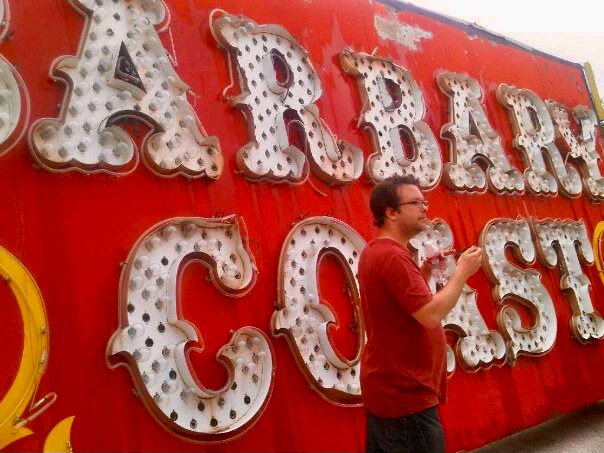
Perhaps one of the ugliest casinos ever built on the Las Vegas strip, the Barbary Coast, opened on March 2, 1979. Run by the son of a prominent Vegas casino mogul, Jackie Gaughan, the Barbary Coast operated until Boyd Gaming acquired it in 2007. It then changed its name to Bill's Gamblin' Hall and Saloon.
The Coast was a relatively narrow building as casinos go. It had a Wild West flavor inside and offered cheap food, chintzy trinkets for sale, and all of your favorite games with low table minimums.
I've been to and through the Barbary Coast many times during my trips to Nevada. One of the standout memories from that venue was a regular performer there - Big Elvis. Rumored to be the Love Child of the actual Elvis Presley, Big Elvis looked and sounded like The King. Weighing in at 960 pounds, it's easy to decipher how Big Elvis came up with the stage name!
The Barbary Coast remained a local's favorite until its closure in 2013. After an extensive renovation and rebranding, the old Barbary Coast is now The Cromwell.

My first trip to Vegas took place around 2004, and Algiers was hanging by a thread. Located further up the Strip between Downtown and the newer, massive megaresorts at the south end, Algiers died a slow death.
Opened in 1953, Algiers was an Arabian-themed resort, much like the Sahara just a few blocks south. It was not unlike the other, smaller motor coach hotels of its day but did offer 110 rooms with Persian flair.
Although faded by the intense Nevada sun, this sign offers a glimpse of the hotel's pink and turquoise color palette. I can only imagine what Vegas must have looked like in the heyday of the 1960s when so much Hollywood premiered at the casino showrooms.
Algiers was demolished in 2005, making way for the Fountainblue, which has never opened nor completed.
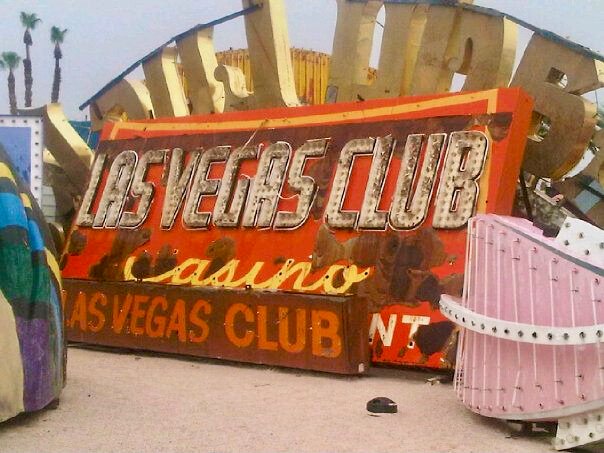
Located on the site of the Overland Hotel, one of Downtown Las Vegas' first hotels, Las Vegas Club opened in 1949. The LV Club was a quirky little locals casino, and I've spent many hours inside playing blackjack at the low-limit tables.
As the Downtown area began to upscale a bit in later years, the Las Vegas Club struggled to attract visitors. It was located next to the ultra seedy Glitter Gulch strip club; it was perceived as somewhat unsavory with all the riff-raff hanging around in front and close to its entrance.
Nevertheless, the Las Vegas Club was an icon of the Downtown district. Located at the top of Fremont Street, it was closed in 2015 and was ultimately demolished. Now, the chic new mega-casino, Circa, stands on the former site.
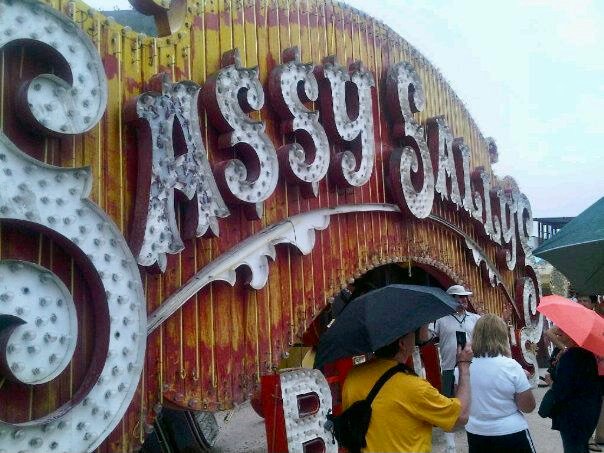
Sassy Sally's Casino was never a big draw Downtown. Located in a small run of tiny slot parlors, it operated in the 1980s, undergoing several name changes in the process.
On the site of the Silver Palace, Sassy Sally's catered to the Downtown crowd that enjoyed the old, western-themed gin joints that prevailed there at the time. The sign, however, is definitely in keeping with Vegas' dusty, saloon-themed era.
The entire row of penny slot parlors was purchased by Derek Stevens and razed in 2017. Stevens, the owner of several resorts Downtown, incorporated that site into the Circa Casino project that now dominates the north end of Fremont Street.
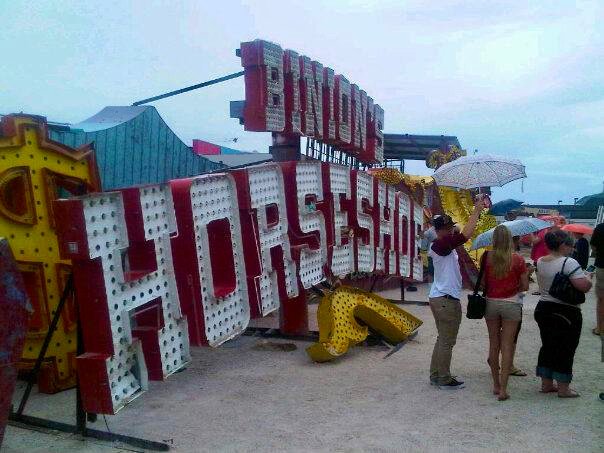
One of the most historic Downtown properties ever, the sign from Binion's Horseshoe evokes strong memories of my early days in Las Vegas.
Binion's Horseshoe was the classic, old-school Las Vegas Casino. Run by ex-con Benny Binion, it was the professional gambler's casino and the birthplace of the World Series of Poker. The event took place here from 1970 until 2005.
Binion's stretches out over an entire block and still operates to this day. A low table limit casino is one of my favorite places to play $1 blackjack and craps, have a cheap dinner and collect free drinks for as long as I can stand up. (Or lay down and still drink!) And Binion's fits this bill perfectly!
Purchased from Binion in 2005, the owners of another classic Downtown casino across the street, Four Queens, still operate these establishments.
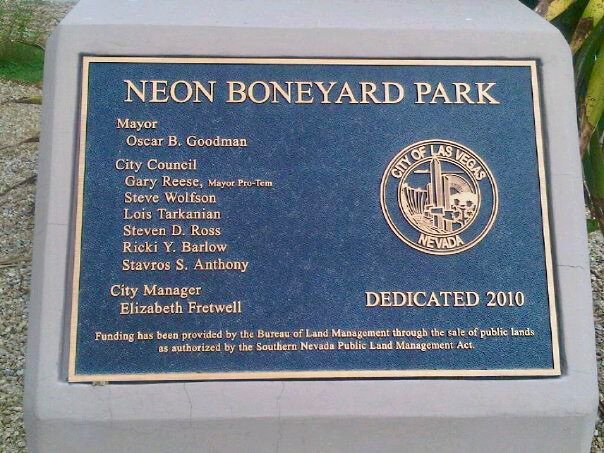
The Neon Boneyard is a fascinating tour through Vegas history. The guides are Vegas history enthusiasts and offer tons of fun accounts and insight into casino development, sign design, and historical narrative.
An easy walk from the Fremont Street area, the Boneyard is a Must-See for any Las Vegas fan hoping to experience some of the sights and glamour of this city's bygone eras.
Cheers!
All photos taken by the author with iPhone.
Sources:
neonmuseum.org
wikipedia.org
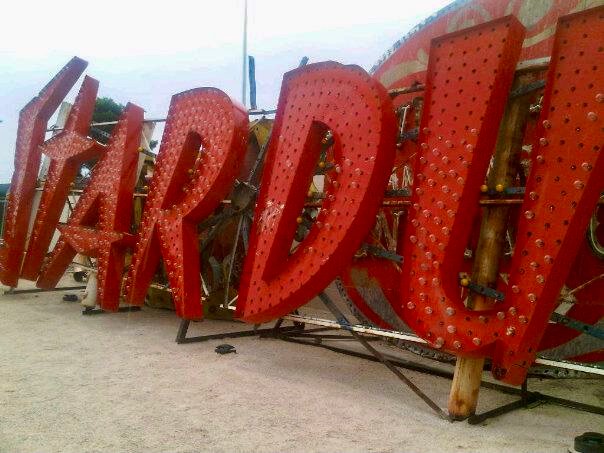
Congratulations @braveboat! You received the biggest smile and some love from TravelFeed! Keep up the amazing blog. 😍 Your post was also chosen as top pick of the day and is now featured on the TravelFeed.io front page.
Thanks for using TravelFeed!
@smeralda (TravelFeed team)
PS: Have you joined our Discord yet? This is where over 1000 members of the TravelFeed come together to chat. Join us!